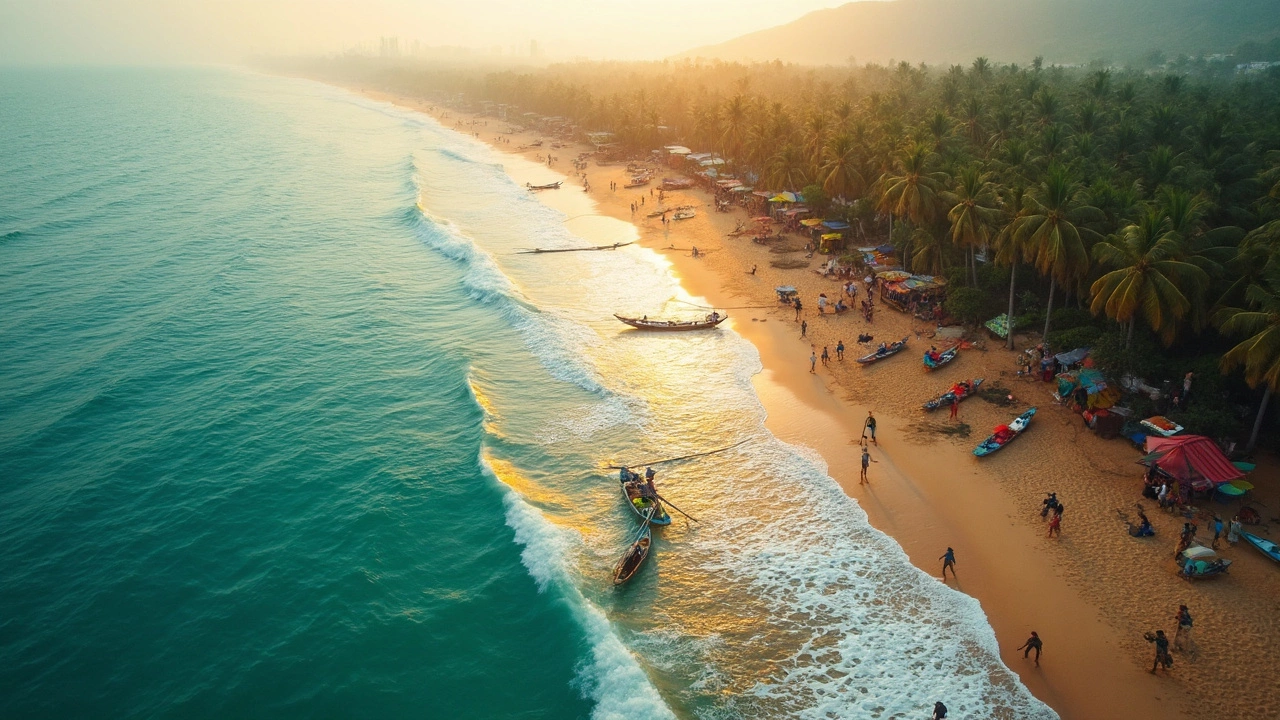Exploring India’s Exotic Vacation Islands
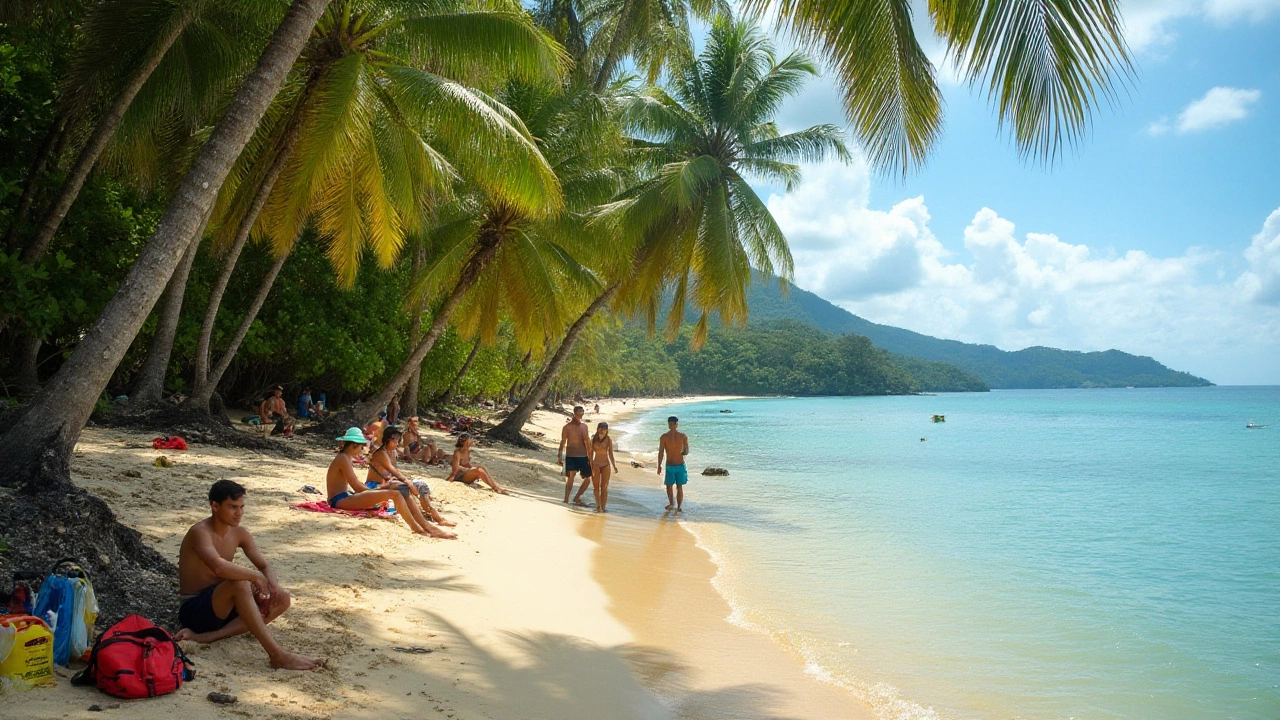
India’s mainland may be famed for its rich cultural tapestry and bustling cities, yet its islands stand as unsung heroes of tropical beauty and tranquility. Whether nestled in the Bay of Bengal or amidst the Arabian Sea, these islands offer a perfect haven for beach lovers and adventurers alike.
From the sunkissed shores of the Andaman and Nicobar Islands to the less-trodden paths of the Lakshadweep Archipelago, each destination teems with unique experiences. With white sandy beaches, vibrant coral reefs, and diverse ecosystems, these islands promise both relaxation and adventure. Discover how to make the most of your island getaway with insights into the archipelagos that dot India’s coastal waters.
- Andaman and Nicobar Islands
- Lakshadweep Archipelago
- Majuli Island, Assam
- Tips for Island Hopping in India
Andaman and Nicobar Islands
Nestled in the emerald embrace of the Bay of Bengal, the Andaman and Nicobar Islands form one of the most enchanting archipelagos off India's eastern coast. Comprising over 300 islands, they are a treasure trove of dense rainforests, shimmering beaches, and vibrant coral reefs. These islands are a testament to nature’s creativity, making them an ideal destination for anyone yearning for a perfect vacation away from the country's bustling metropolises.
One of the standout features of the Andaman and Nicobar Islands is their rich biodiversity. From the endemic species of mammals that roam the forests to the more than 270 species of birds, including the majestic Andaman Woodpecker, the wildlife here captivates the attention of naturalists and casual observers alike. The clear, turquoise waters surrounding the islands are teeming with marine life, offering a spectacular view for divers and snorkelers. Moreover, beneath the waves, captivating coral reefs play host to myriad marine species. Havelock Island is particularly revered for its underwater richness, drawing adventure enthusiasts worldwide.
For history buffs, the allure of these islands extends beyond their natural beauty. The Cellular Jail in Port Blair, often referred to as ‘Kala Pani’, holds poignant stories of India's past struggles for freedom. The prison, where many of India's freedom fighters were exiled, now serves as a national monument. Visiting the 'Light and Sound Show' at the jail provides a deep insight into the island's historical significance. As modernity slowly integrates into these islands, the blend of tradition with contemporary history presents a fascinating dual narrative.
Adventure seekers won’t feel out of place here, either. The islands offer a slew of activities—from snorkeling and scuba diving to trekking through lush jungles. For those drawn to the peaks, the summit of Saddle Peak is the highest elevation in the archipelago and rewards climbers with panoramic vistas of the islands and the surrounding ocean. Opting for a trek to witness this view is a choice that promises both challenge and reward. The islands are also a great spot for bird watching or simply soaking up the natural beauty from Radhanagar Beach, consistently ranked among the finest stretches of sand globally.
Access to the Andaman and Nicobar Islands has improved significantly over the years. Regular flights from mainland India land in Port Blair, the archipelago's administrative hub. From there, travelers can explore other islands by ferries, which cater to both locals and tourists. Still, preserving the ecological balance is a top concern, so initiatives for sustainable tourism have gained momentum. It's vital to respect the ecosystem, ensuring that nature's bounty is left untouched for future generations to appreciate. The islands remain a symbol of pristine allure where people can escape into nature's unspoiled embrace.
"To see the magnificence of nature in its pristine form, the Andamans offer a true retreat," attests travel author John Hemmings in his latest travelogue, capturing the islands' essence with poetic clarity.
The best time to visit is between October and May, when the weather is pleasantly warm and relatively dry. Travelers are advised to pack light clothing and swimwear but also bring gear suitable for light trekking. While the islands are predominantly serene and safe, adhering to local guidelines and respecting indigenous communities ensures a harmonious visit. Whether it's the allure of glittering beaches, the serenity of lush forests, or the intrigue of history, the islands offer a quintessential escape that remains indelibly etched in any visitor's memory.
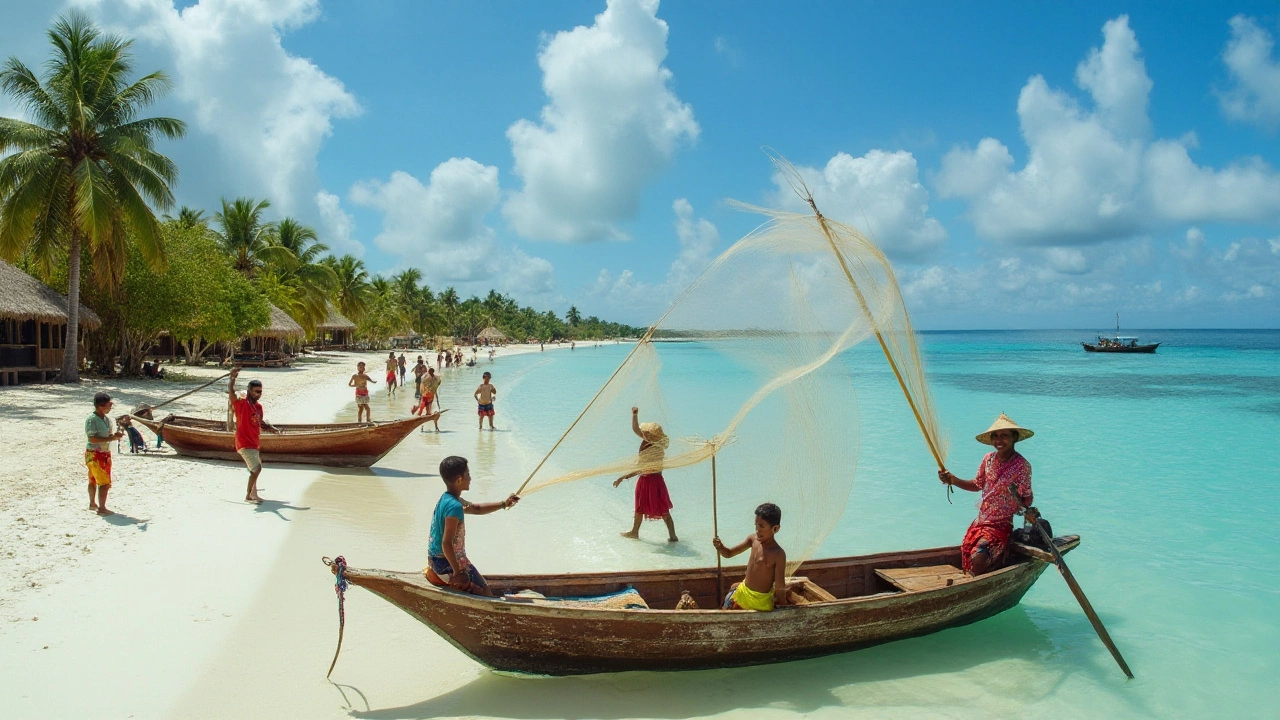
Lakshadweep Archipelago
The Lakshadweep Archipelago, a stunning cluster of 36 islands dotting the Arabian Sea, represents a hidden gem among India beaches. These islands, spread across 32 square kilometers, are a paradise for those seeking pristine natural beauty and unparalleled marine life. Not just about the sun and sand, Lakshadweep is distinguished by its rich culture and history that dates back to the ancient times when the islands were inhabited by fishermen and spice traders. The name 'Lakshadweep' translates to 'a hundred thousand islands' in Malayalam, symbolizing its countless vibrant facets.
Tourism in Lakshadweep is distinct due to its emphasis on conservation and local culture. The government tightly regulates visitors to protect its delicate ecosystem, especially since only ten islands are open to tourism. Among these, Agatti, Bangaram, and Kadmat are famous for their emerald waters and coral reefs, making them perfect for diving enthusiasts. The reefs, alive with vibrant corals and a myriad of marine species, offer some of the best snorkeling and scuba diving experiences in India. If you are new to diving, the islands' numerous dive centers provide training and gear. Diving into the warm waters, you'll encounter a world brimming with colorful fish, manta rays, and the occasional turtle.
Navigation across this secluded paradise is an adventure in itself. The easiest way to reach Lakshadweep is by air to Agatti Island, which serves as the gateway to the archipelago. From there, luxurious boats will ferry you to your chosen island. Against a backdrop of serene lagoons and turquoise waters, you might find yourself lost in the rhythm of the ocean waves. Be sure to engage with the local communities, get a taste of seafood delicacies, and witness their vibrant traditions. According to a traveler quoted in National Geographic, "The islands offer a sense of tranquility and community that's hard to find elsewhere."
Conscious of the ecological sensitivity of the region, Lakshadweep puts a spotlight on sustainability. Resorts and accommodations emphasize eco-friendly practices, often using solar energy and featuring rainwater harvesting systems. For those interested in a unique cultural experience, visiting during a local festival like Eid provides an insight into the islands' Islamic heritage, which is marked by lively music, dances, and traditional Malabar cuisine. The local administrative body has also set up stringent measures to educate and involve the community in keeping Lakshadweep's natural environment intact.
When it comes to itineraries, there are a few key experiences to consider. Most travelers recommend staying a minimum of five days to truly soak in the beauty of these remote islands. Whether you are relaxing on the serene beach of Kalpeni Island, exploring the historic lighthouse on Minicoy, or partaking in water sports on Kavaratti, each moment is a chance to create lasting memories. Before planning your journey, remember to check permits and entry requirements as they can sometimes change due to conservation efforts. By treading lightly and respecting local guidelines, your adventure to Lakshadweep will not only be a chance to explore but also a step towards conscious travel.
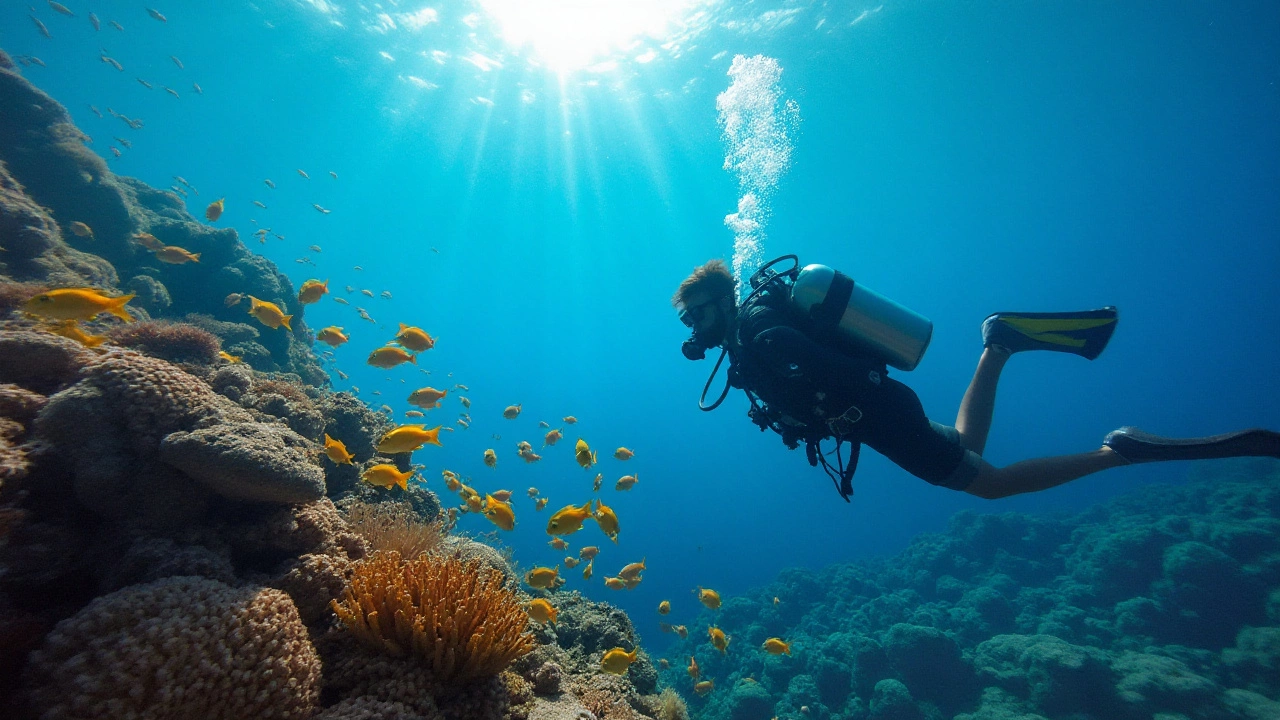
Majuli Island, Assam
Majuli Island, situated in the heart of the Brahmaputra River in Assam, holds the title of the world's largest river island, a distinction officially recognized by the Guinness World Records. This captivating island is a testament to the enchanting beauty and rich cultural tapestry of northeastern India. Sprawling over 352 square kilometers, Majuli is an epitome of rustic charm, dotted with traditional Assamese villages, rice paddies, and wetlands that serve as a sanctuary for diverse bird species. The island is accessible only by ferries from Jorhat, which adds a sense of adventure and isolation, enhancing its allure as a unique vacation island.
The cultural fabric of Majuli is intricately woven with the Satras, which are the neo-Vaishnavite monasteries established by the revered saint Srimanta Sankardeva in the 15th century. These Satras serve as cultural hubs, preserving ancient art forms such as Sattriya dance and Bhaona (religious plays), drawing in enthusiasts and scholars alike. Visitors can witness monks engaging in these spiritual and artistic practices, offering a profound insight into Assam's spiritual heritage.
According to Bhuban Mohan, a cultural historian, "Majuli isn't just a place; it's a living museum of Assam’s spiritual and cultural evolution."
Majuli boasts not just of its cultural wealth but also its vibrant natural landscape. With the seasonal rise and fall of the Brahmaputra river, the fertile lands of Majuli transform, revealing lush fields that become populated by a mosaic of local flora and fauna. The island is home to several migratory birds, making it a paradise for avid birdwatchers. Amidst this natural orchestra, fishing communities thrive, using traditional methods passed down generations, contributing to the tapestry of life on the island.
Though a bastion of cultural and natural beauty, Majuli faces challenges due to erosion by the mighty Brahmaputra, resulting in a dwindling landmass over the decades. Efforts are being made by the local government and environmental organizations to address these issues through sustainable practices and community engagement. Visitors can contribute by choosing eco-friendly accommodations and respecting local customs. Majuli represents a perfect blend of serenity and spirituality, making it an ideal beach destination, albeit without the typical coastal features associated with an island getaway. It offers an opportunity to immerse in the tranquil rhythms of rural life while indulging in its cultural bounty and scenic splendor.
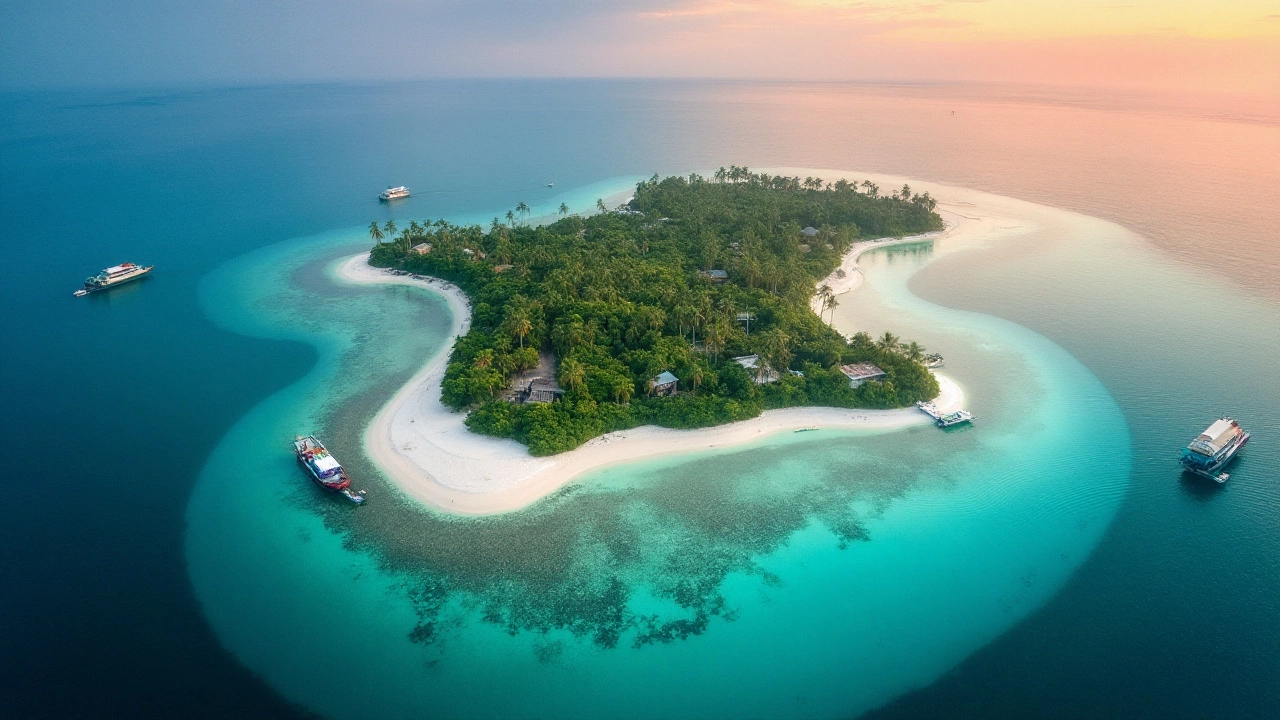
Tips for Island Hopping in India
Embarking on an island hopping adventure off the coast of India can be an exciting journey filled with exotic sights and exotic habitats. These spectacular destinations, nestled amidst the vast Indian Ocean, offer a plethora of experiences that require a bit of preparation to fully enjoy. To begin your journey, ensure that your travel documents are in order well before you start. Different islands may have distinct regulations, and those like the Andaman and Nicobar Islands occasionally require special permits for certain areas. Having your paperwork in place will save you time and potential headaches, allowing your trip to start off smoothly.
Getting around the vacation islands usually involves local ferries or small charter planes, depending on the distances involved. Booking in advance is always wise, especially during peak travel seasons, to secure the most convenient timings. Equip yourself with a flexible itinerary; while precise plans can be beneficial, island travel can sometimes be unpredictable due to weather or sea conditions. Embrace the spontaneity of the journey, as some of the most serene moments arrive unplanned, often leading to hidden beaches or lesser-known coves that aren't marked on typical maps.
The mesmerizing marine life of islands like those in the Lakshadweep Archipelago begs for exploration. While snorkeling and diving activities offer immersive experiences, always ensure that you're adhering to local conservation guidelines. Reefs are delicate ecosystems, and respecting them not only preserves their beauty for others but enhances your personal connection to the environment. A local guide can enrich your understanding and experience, as well as keep safe distances from sensitive habitats. As one noted traveler remarked,
"Respect for nature transforms a trip into a fusion of exploration and stewardship."
Cultural nuances play an integral role in shaping your journey. Many islands are home to indigenous communities with rich histories and traditions. Learning a few local phrases or customs not only shows respect but can also open doors to authentic experiences, far different from blueprints found in guidebooks. Enjoy trying local dishes and learning their stories, grounded in age-old practices passed down through generations. Much like India’s mainland, its islands stand as vibrant tapestries of cultural and natural histories that beg to be understood and appreciated.
Practical considerations aside, remember the essence of why you’re island hopping: to relax and connect with nature. Don't rush from one spot to another; take the time to soak in sunsets, sit by the water, and relish the unhurried pace of island life. Share your experiences with fellow travelers and locals alike; these interactions often lead to insights and friendships that extend beyond the boundaries of your immediate adventure. The memories created in the serene backdrop of India's islands are treasures you'll hold for a lifetime, enriching your understanding not only of these lands but of the larger world and nature itself.
